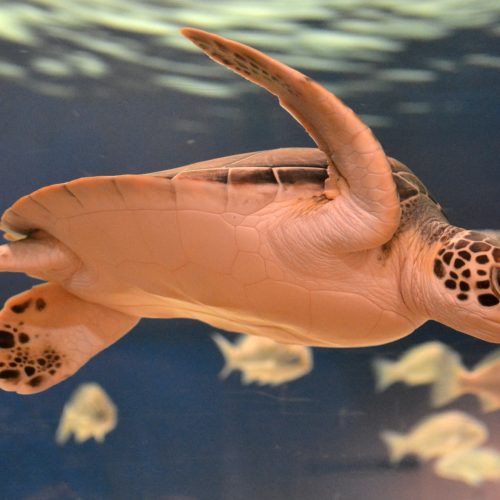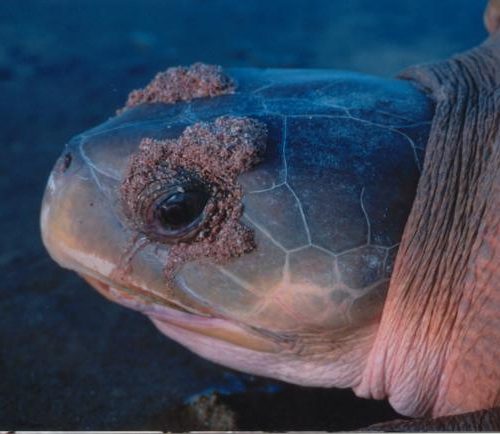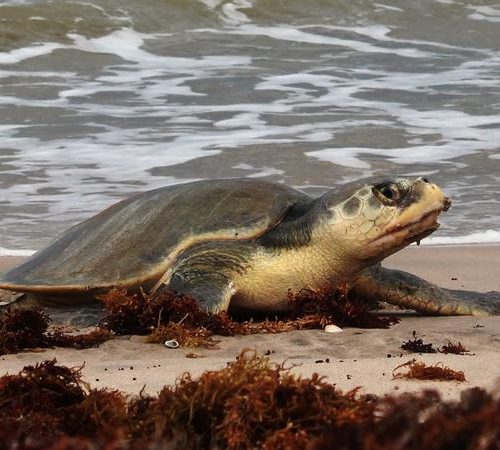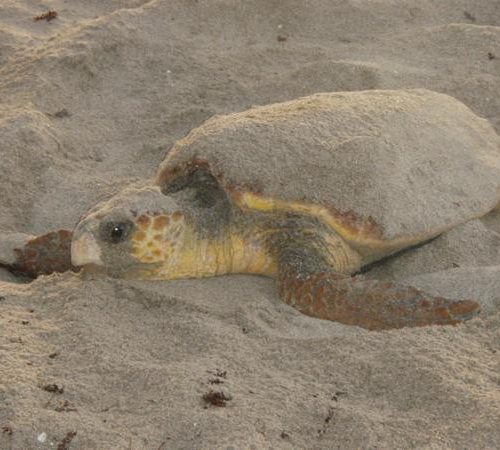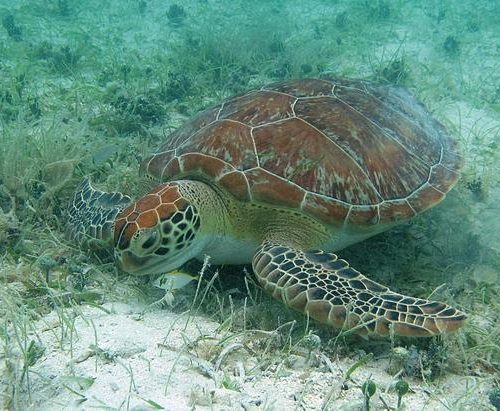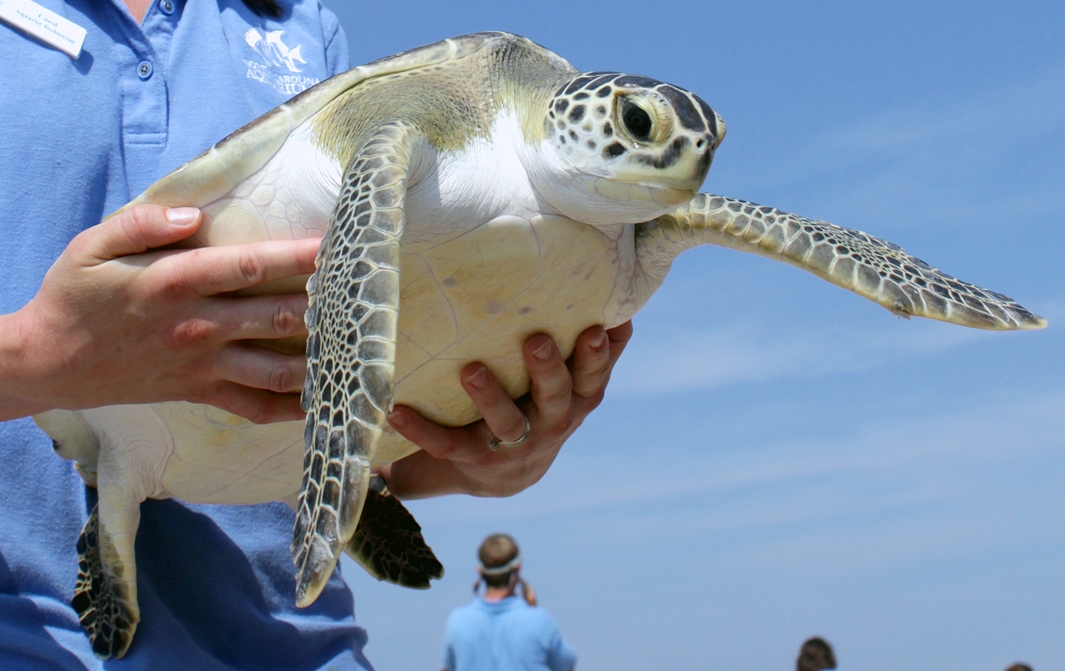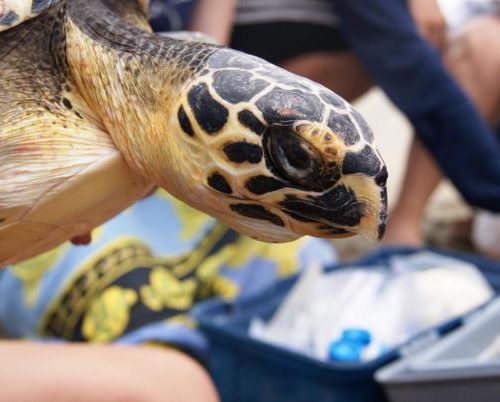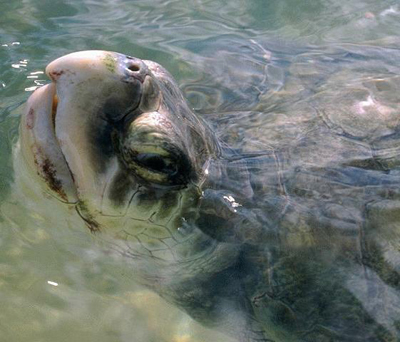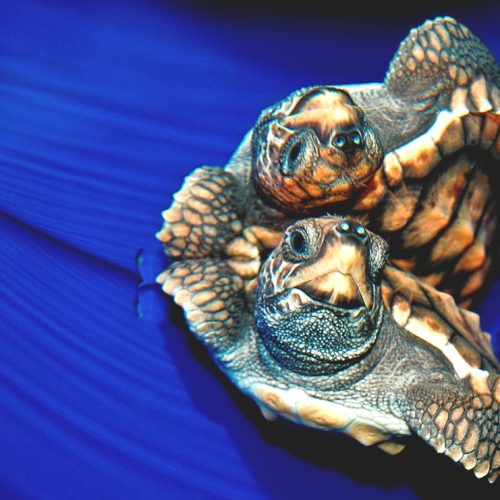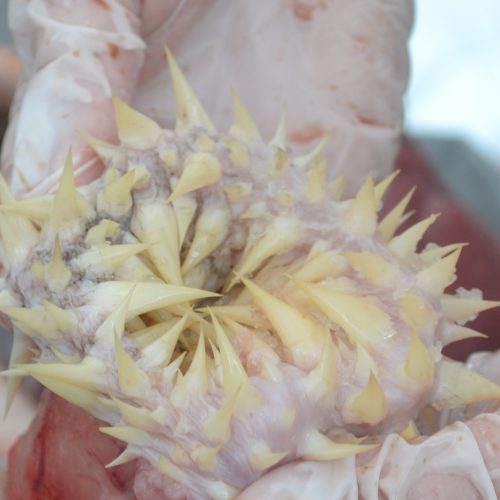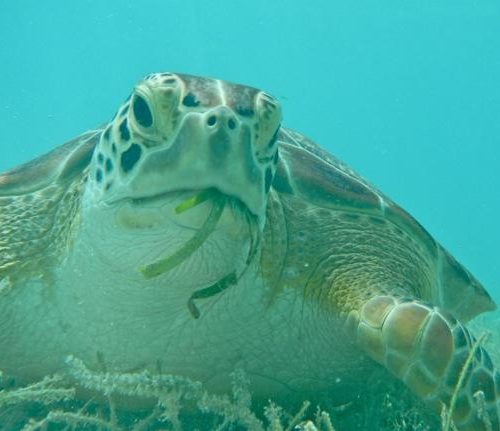Sea Turtle Adaptations
Sea turtles have many adaptations that help them survive in their habitat.
- Sea turtles are strong swimmers. The cruising speed for green sea turtles, like the one in this video, is about 0.9 to 1.4 miles per hour (1.5 to 2.3 km per hour). Leatherbacks have been recorded at speeds of 0.9 to 5.8 mph (1.5 to 9.3 kph).
- Sea turtle bodies are hydrodynamic, meaning their bodies are shaped to minimize drag and resistance when traveling through water. Their shells are streamlined, compact, and flattened.
- Sea turtles have flippers, which act like big paddles or oars, enabling the turtles to move through the water more like fish rather than lumbering reptiles.
Turtles use camouflage to hide from predators and avoid detection by prey. To help blend in with the ocean bottom, a sea turtle’s carapace is usually dark or a combination of colors. The plastron is a lighter color, from a creamy white to a yellowish brown. This prevents them from being seen by prey living on the bottom looking skyward. This type of camouflage is called countershading.
Most sea turtles are ectothermic or “cold blooded,” which means that they cannot regulate their internal body temperature. Their metabolism is dependent on the surrounding environment. Being ectothermic had some advantages. It enables them to lower their metabolic rate, so they need less oxygen and can stay submerged for longer periods of time. However, being dependent on the temperature of the environment also has disadvantages. Most sea turtles are limited to tropical and temperate waters. If they encounter cold waters, they can become “cold-stunned” and may become stranded or die.
Leatherbacks are uniquely adapted to venture into and stay in colder waters. Through a variety of behavioral and physiological mechanisms, Leatherbacks possess the unique ability to hold and regulate their body temperature independent of the environmental temperature. This makes them endothermic. Their large size compared to their body surface area allows for a more efficient storage of heat. A layer of fat under the carapace insulates the turtle’s insides from the cool water, and the oils in its body store heat. Diving deeper than other sea turtles, Leatherbacks reach depths of over 3,000 feet as they hunt for jellyfish. They have a higher number of red blood cells and higher concentrations of myoglobin in their muscles, enabling them to carry more oxygen and stay submerged for longer periods of time.
All sea turtles begin life on land before crawling to the water. Despite their adaptations for life at sea, sea turtles must breathe air with lungs, like humans do. They can hold their breath for 30 minutes or several hours while in a resting state, but they must eventually surface to take a breath of air. Because they do not need a constant supply of oxygen-rich water in order to breath, sea turtles can return to land, although this usually only happens when females are nesting. Female sea turtles come ashore to lay their eggs in nest cavities they dig in the sand.
Every living organism needs water to live. If we were to drink seawater and not freshwater, it would dehydrate us and lead to death. Sea turtles do not have this problem. They obtain water from their food, and they can also metabolize saltwater. Specialized glands in their bodies concentrate and excrete the salt and retain the water. Folklore describes a sea turtle mother crying while she lays her eggs. Though nesting females look very much as though they are shedding tears, the drops are actually salt secretions from glands near their eyes. This adaptation also helps keep sand out of their eyes as they nest.
Sea turtles often travel thousands of miles between feeding and nesting grounds. Yet, adult females return to the same region where they were hatched. It is not known exactly how they are able to navigate back to their natal beaches. Researchers think they may use a number of clues including ocean currents, the earth’s magnetic field, and water chemistry.
Like other turtles, sea turtles have no teeth. Their jaws are powerful and shaped like a bird’s beak. Most sea turtles are carnivores eating crabs, sponges,, clams, mollusks and other marine invertebrates. A favorite food of most sea turtles is the jellyfish. Leathery projections line the sea turtles throats and protect them from the sting of the jelly’s tentacles. Only the green sea turtle spends much time eating aquatic vegetation.

